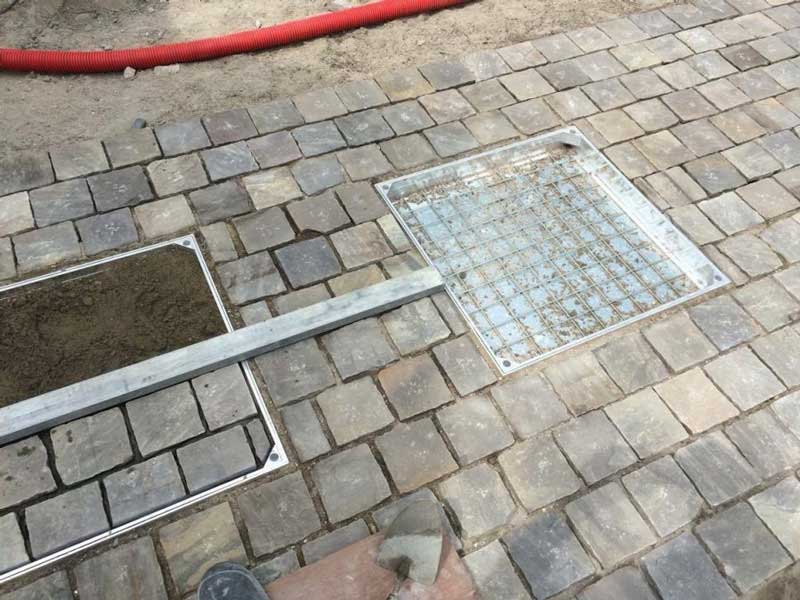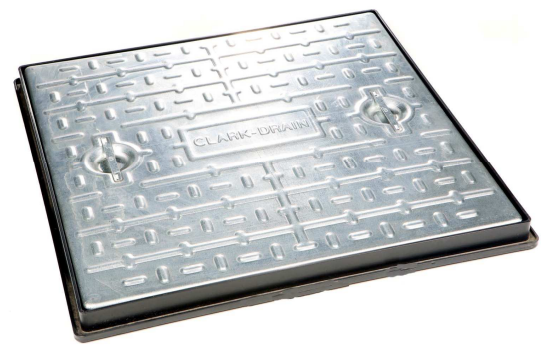You’ve noticed a damaged, compromised or missing manhole cover. The last thing you need in your busy life is to fret over replacing one. It’s a hassle to find and install a replacement. Plus, the fact that you may not be able to use your driveway as there’s a hole in it all adds to the stress.
Below we’ve put together the key steps you need to follow for a swift, safe replacement with minimal effort and cost. Without further ado, here’s how to replace a manhole cover.
Table of contents
- Be realistic when replacing manhole covers
- Take an accurate measurement of what you already have
- Pick the load class that will be most suitable
- Choose your material
- Plastic inspection chambers?
- How to disguise a manhole cover
- What can I fill a recessed manhole cover with?
Be realistic when replacing manhole covers
Now is the time to be realistic. Small cracks in your manhole cover or drain cover might seem like a small issue. However, this crack is dangerous.
A crack compromises the strength of the manhole. To the point where even a small child stepping on this could fall though. Whenever you spot a structural issue with a manhole cover, replace it.
Unfortunately, if there’s damage to a manhole cover, it’s prudent to replace the frame too. This is because there’s no clear-cut way to ensure the frame is sound.
Take an accurate measurement of what you already have
All you need in any situation (except if you discover a plastic inspection chamber) is the clear opening measurement. This is the width, height and depth of the hole in the ground.
To get the clear opening measurement, put the tape measure into the hole. Measure the size of the inspection chamber below from wall to wall. Every manhole cover is measured the same, so once you have this, you can find a replacement.
Does your manhole cover have an inspection chamber underneath it? If it does, you’ll need to measure the diameter of the circular chamber. These chambers are almost always covered with a circular manhole cover and pick a manhole cover and frame which matches this.
Double-check that you choose a cover and frame compatible with all major inspection chamber brands. You must also make sure it’s still the correct load class.
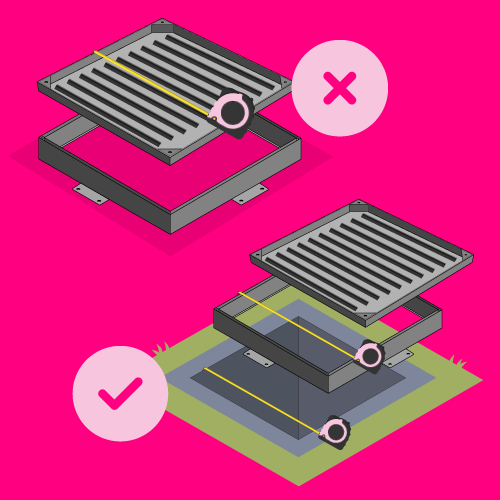

Pick the load class that will be most suitable
As explained in our guide to manhole load classes, class denotes the largest weight a manhole can take safely.
For example, if installing a manhole cover in a private driveway, you could safely assume B125 would be a high enough load capacity. This allows for up to 12.5 tonnes of loading which should satisfy 4x4s and vans on a domestic driveway.
It’s at your discretion to decide what you need. However, our advisers can give recommendations daily if you need help. So it’s worth asking.
It’s a good idea to consider things like food shopping delivery vans and lorries using your driveway to turn.
Choose your material
You now know what size and load class you’re after. Time to choose which metal you want your manhole cover replacement to be made from.
The table below outlines the benefits of each of the materials.
| Material | Properties | Best Application |
| Aluminium | Most common material for recessed covers to hold slabs, grass and tiles for aesthetic purposes. Rated up to 10 tonnes | For domestic applications where recessed covers would give best final look |
| Stainless Steel | A common choice for pedestrianized areas where occasional strength is required for delivery vehicles in town centres for example | For predominantly pedestrian areas where heavier vehicles up to 10 tonnes may occasionally, slowly travel over them |
| Galvanised Steel | Lightweight and easy to install, a versatile option for domestic or private areas with light traffic only. Rated up to 17 tonnes | Best suited to very slow moving traffic like private car parks and domestic driveways. Not for use on highways or roads |
| Cast Iron | Black in colour so best to blend in to tarmac, cast iron is the strongest material of the four, rated up to 90 tonnes | Suited to all areas but overkill in lightly trafficked or pedestrian areas. Cast iron manhole covers are allowed on highways and roads. |
Plastic inspection chambers?
These are typically found in more modern properties. It is vital that when replacing the manhole cover, you choose one and a frame that matches the size of that chamber.
The greatest depth of a chamber you can have is up to 1.2m. Any bigger and you will need to reduce it as it is a danger to children passing by if not fixed. You can do this with a reducer (as seen in the image below). You can use these to ensure you meet building standards.
If you want to know the basics of inspection chambers, check out our ‘What is an inspection chamber?” guide.
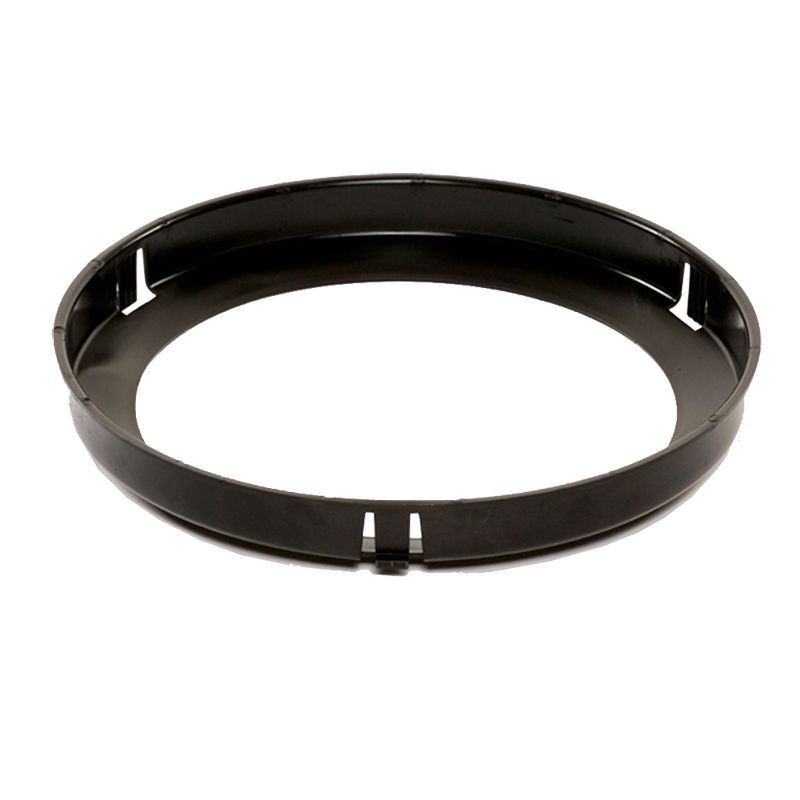
How to disguise a manhole cover
While it’s unfortunate, having a manhole cover in the middle of a lawn, garden, driveway, garage, or pathway is essential. Even with cast iron manhole covers and galvanised steel manhole covers available in various appealing designs, they can still stick out like a sore thumb in certain areas
It’s not the best idea to physically cover a manhole cover, but you can install a recessed manhole cover. These have many options of infill that disguise and blend the cover. This means it’s still accessible for maintenance, too, without affecting its surroundings. So, there is no extra cost involved once the recessed manhole cover has been installed.
Again, the purpose of this design is not to hide the manhole cover. Instead, it will cleverly disguise it and seamlessly blend it into the surrounding environment.
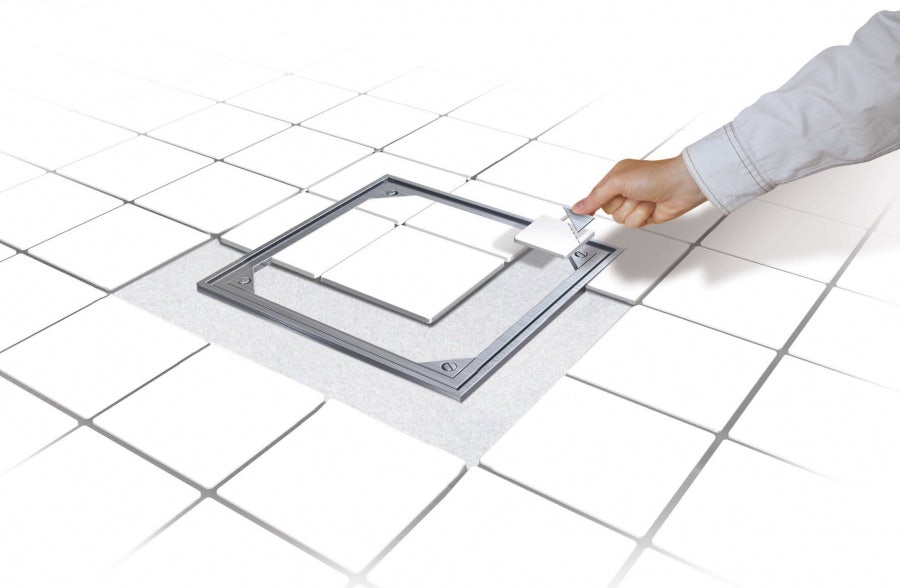
If you have a manhole cover that’s inside, for example in a garage or a porch, you can also use a recessed manhole cover. There are fewer infill options though, simply because there are some you wouldn’t want in the middle of a garage!
You never want to physically cover a manhole cover inside or outside. This is because you will always need to allow access for maintenance and repairs.
Don’t forget that when choosing a recessed manhole cover, it’s important to note the loading class needed. The fact that the cover is recessed makes no bearing on whether it needs to be a higher class than usual. This is all factored in by the manufacturer on the assessment of the cover.
Use our guide to manhole cover classification sizes to work out which is best for you.
What can I fill a recessed manhole cover with?
Recessed manhole covers come with a tray built-in. This is what you fill with the materials or substrate based on the depth the cover says it can hold.
For example, an 80mm deep tray will hold 60mm block paving, as it must be bedded in 20mm of concrete for the paving to stay put.
You can fill a recessed manhole cover that’s outside with:
- Block paving
- Resin paving
- Concrete
- Screed
- Artificial grass
You may notice we didn’t say real grass. That’s because filling it with real grass makes for a tedious maintenance procedure, and you must get a permeable manhole cover. This is to ensure the grass stays alive.
Internally, you can fill a recessed manhole cover with block paving, concrete or screed. This is perfect for a garage or utility room. Alternatively, use tile paving for porches and more design-conscious areas.
